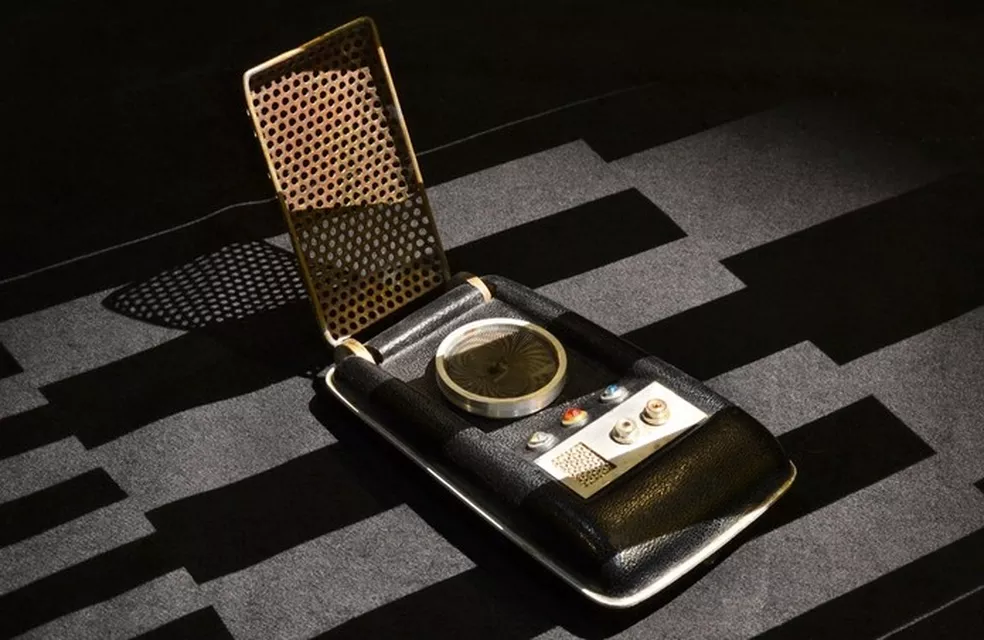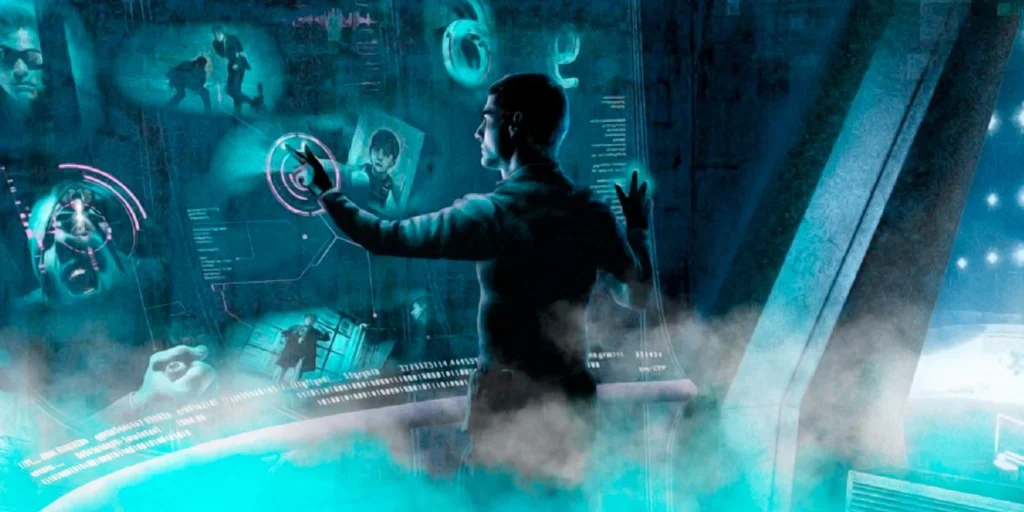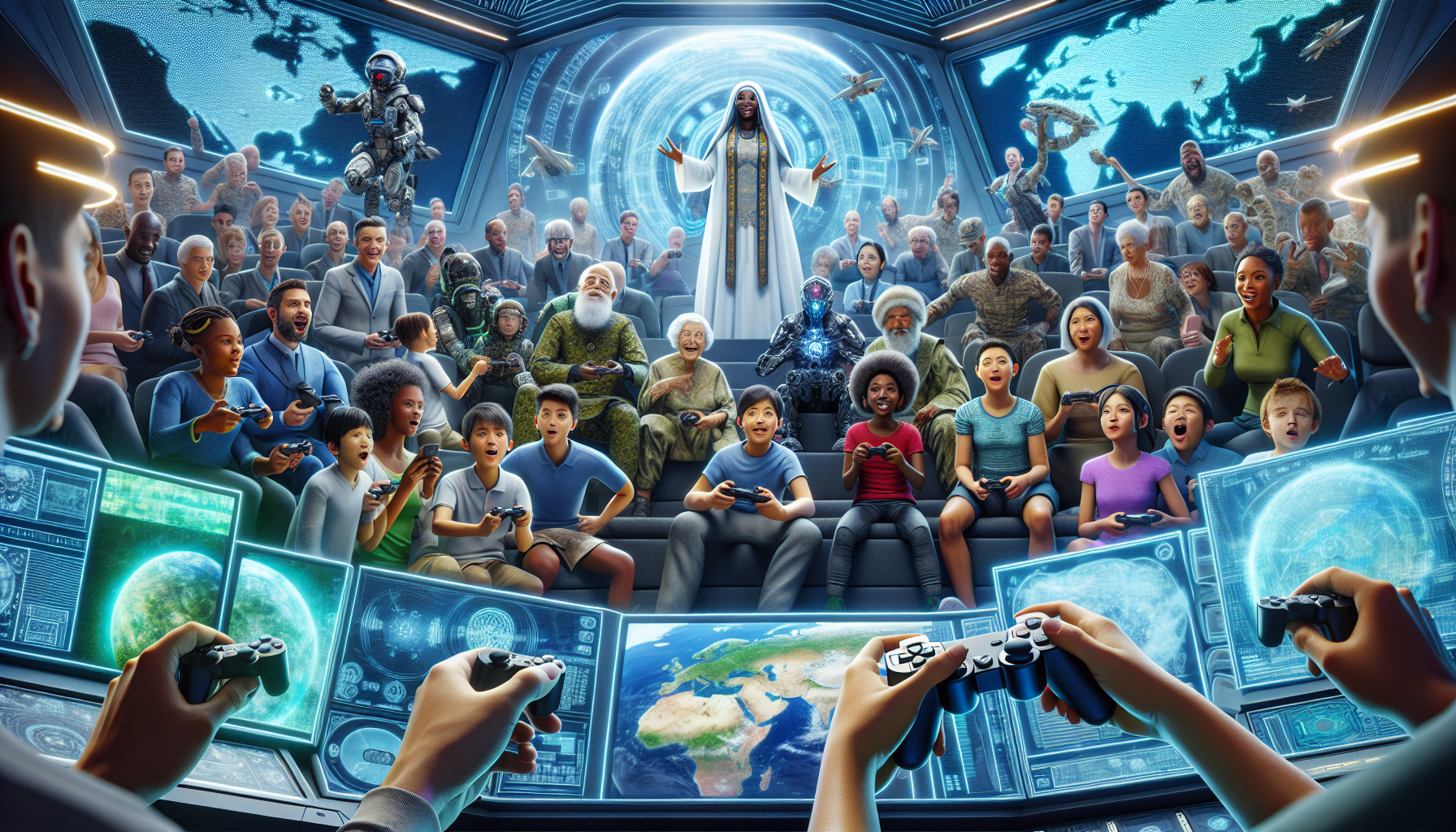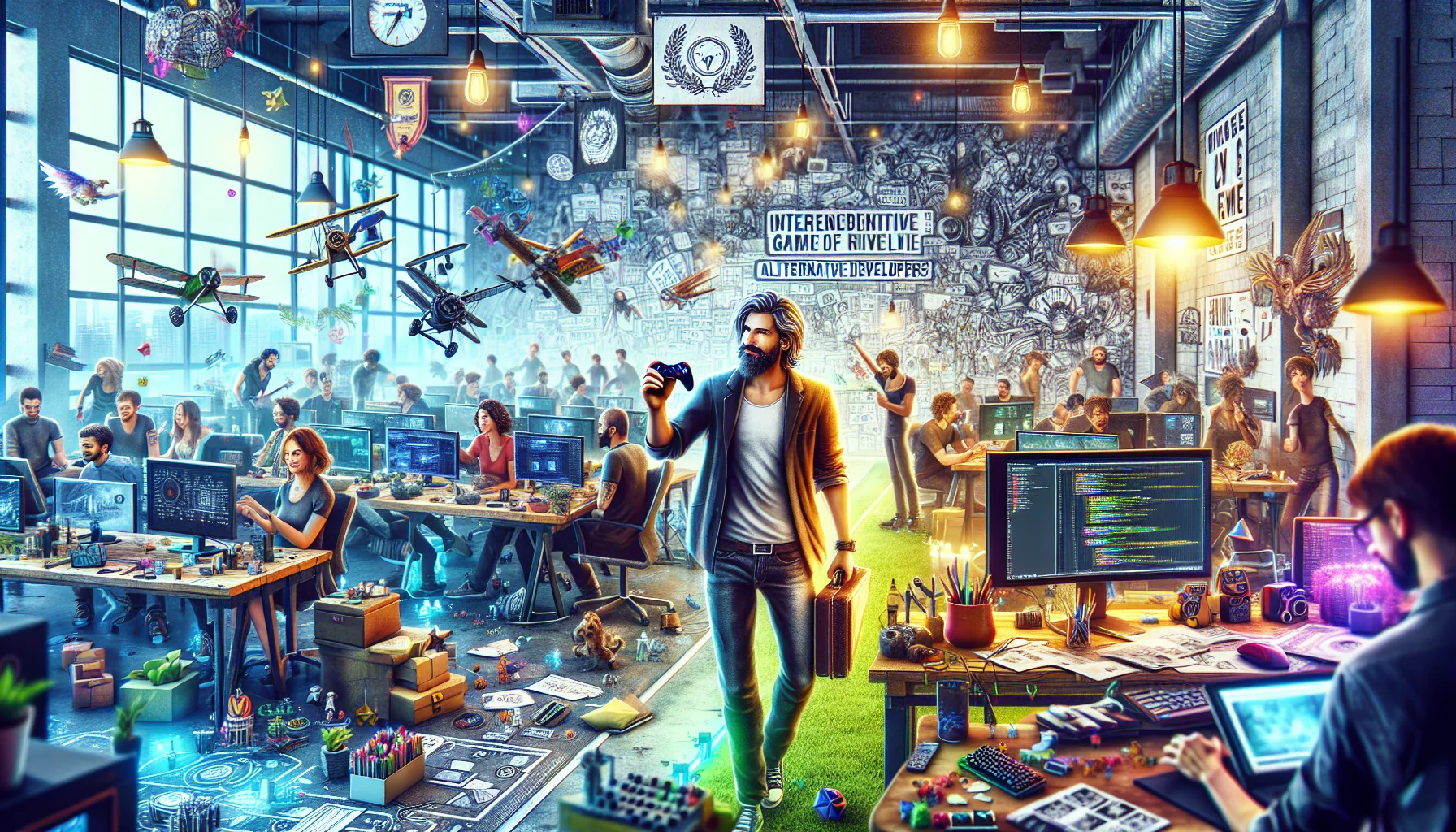Adverts
In the vast universe of science fiction, many films transport us to distant worlds and unimaginable futures, challenging our understanding of what is possible.
However, the line between fiction and reality is becoming increasingly blurred. Technologies that once seemed like they came from far-fetched scripts are taking shape in laboratories and startups around the world, surprising even the most skeptical.
Adverts
This is the perfect time to revisit those stories that once made us question the plausibility of such inventions.
The convergence of cinema and technological progress is no coincidence. From instant communication devices to commercial space travel, many of the concepts presented in cinema are being replicated in the real world with impressive vigor.
Adverts
Topics that were previously approached with a tone of futuristic speculation are now beginning to be discussed at scientific conferences and making headlines in newspapers.
This not only challenges our imagination, but also expands the possibilities for innovation in the near future.
In this article, a selection of 10 science fiction films that, surprisingly, are inspiring and reflecting real discoveries will be explored.
Each film offers a unique perspective on how cinema can influence and predict technological advances, instigating debates about ethics, society and the future of humanity.
Get ready for a journey where fiction meets reality, and discover how these visionary works are shaping our world, one scene at a time. 🎥🌌

1. Back to the Future: Flying Skateboards and Other Crazy Predictions
Ah, the classic “Back to the Future”! Who hasn’t dreamed of gliding through the streets on a hoverboard, without worrying about potholes or bumpy sidewalks? Although we don’t yet have a hoverboard like Marty McFly’s (sorry, hoverboard fans), we do have some devices that defy gravity and make us feel like we’re living in the future. Electric skateboards, with their ease of movement, are one example of this. And who knows, maybe soon we’ll have skateboards that actually fly? After all, if 80s hair can come back into fashion, why not flying skateboards?
Plus, “Back to the Future” promised us self-adjusting clothes. We’re still waiting for the day when we can eat a little extra without worrying about our clothes’ size. But in the meantime, 3D printing technologies are already allowing us to create custom-made clothes with a simple click. All that’s missing is a jacket that dries itself after a walk in the rain! 🌧️
2. The Terminator: The Advent of Intelligent Machines
What about “The Terminator”? Movies that scared us with the idea of robots rebelling and turning humanity into their subjects. Thankfully, we haven’t reached the point of fighting killer cyborgs yet (phew!), but artificial intelligence is everywhere, controlling our thermostats, personal assistants and even recommending what kind of pizza we should order on Friday night.
But be careful! With so much technology advancing, one day we might wake up and find that the toaster has gotten tired of being underestimated and has decided to join the machine uprising. Dear John Connor, if you’re reading this, we just want you to know that we’re keeping an eye on the gadgets. And to be fair, we’re also grateful for all this convenience, as long as they don’t turn into evil robots. 😉
3. Matrix: Living in a Virtual Reality World
“The Matrix” introduced us to a world where reality isn’t quite what it seems. And let’s be honest, who hasn’t wanted to take a red pill just to see what it’s like on the other side? Virtual reality is becoming more and more advanced, and the line between what’s real and what’s virtual is getting more blurred by the day.
With virtual reality (VR) headsets becoming increasingly accessible, we can explore new and fantastical worlds without leaving the comfort of our couch. Who needs an expensive vacation when you can climb Everest without having to carry a heavy coat? 🏔️ The real question is: when will VR become so immersive that we start to wonder if we’re already living inside a simulation? Deja Vu, anyone? Because I am.
Augmented Reality: Mixing Reality and Fiction
In addition to VR, augmented reality (AR) is also becoming a part of our daily lives. From interactive games to apps that help us decorate our homes, this technology is changing the way we interact with the world around us. Soon, it will be common to see people walking down the street with glasses that project useful information, such as the name of the person you just forgot, or the location of the nearest coffee shop.
Just imagine: you're walking down the street and suddenly, floating arrows appear indicating the way to the nearest bathroom. Or better yet, an app that lets you know when your crush is nearby! The only thing missing is an app to remind us to stop procrastinating and finally finish that project we started months ago. 📈

4. Star Trek: Long Distance Communications and More
Star Trek fans may have good reason to be proud. The series predicted several technologies we use today, and it all started with that iconic “communicator” that, in a way, evolved into our beloved smartphones. Has anyone tried to “beam me up, Scotty” after a crazy night out? Well, we’re almost there!
In addition to communicators, Star Trek introduced the idea of replicators, which are machines that can create any object from scratch. 3D printing is getting closer to that, allowing us to create a variety of items in our own homes. Wouldn’t it be great to have a machine that could create any meal we desire on the spot? Until then, we still have to deal with the difficult choice between ordering pizza or sushi for delivery. 🍣
Space Exploration: The Final Frontier
Let’s not forget space exploration, another big theme of “Star Trek.” With private companies like SpaceX and Blue Origin racing to make space travel more accessible, we’re closer than ever to becoming a multi-planetary species. Get your spacesuits ready, because we could soon be hitching a ride on a rocket to Mars!
In the meantime, let's hope that someday we can have a spaceship the size of an apartment, with a food replicator in every room. After all, exploring space makes you hungry, and no one wants to face aliens on an empty stomach!

5. Minority Report: The Future of Crime Prevention
“Minority Report” introduced us to a future where crimes are prevented before they even happen. Sure, the idea of arresting people for crimes they didn’t commit is still somewhat disturbing, but predictive and surveillance technologies are becoming increasingly sophisticated.
Today, with the use of advanced algorithms and big data analysis, law enforcement agencies can predict areas where crime is most likely to occur and take preventive action. Of course, we’re not at the point where precogs are floating around in water tanks yet, but technology is advancing fast!
Gestural Interfaces: The Touch of the Future
Another striking point in “Minority Report” is the gestural interfaces. We already have technologies that allow us to control devices with a simple hand movement, such as those we see in video game consoles and in certain smart homes.
Just imagine: you come home, wave your hand, and the lights come on, the coffee maker starts, and your favorite show comes on the TV. All without touching a single button! We are fast approaching a future where touch will be a thing of the past. So, who is ready to live like a Jedi, controlling everything with a simple wave of the hand? 🙌
6. I, Robot: Living with Artificial Intelligence
The movie “I, Robot” brought us a world where intelligent robots live alongside humans in society. Although we don’t yet have robots as advanced as Sonny in the movie, artificial intelligence is becoming an increasingly important part of our lives.
From virtual assistants that help us manage our schedules to robots that do household chores, living with intelligent machines is already a reality. Who has never argued with their virtual assistant because it didn't quite understand their song request? 🤖
Ethics and Robots: A Necessary Debate
With the evolution of robots and artificial intelligence, the ethical question also arises. How should we treat these machines? Should they have rights? And, most importantly, should they be programmed to tell good jokes?
This debate becomes increasingly relevant as we move closer to a future where the line between humans and machines becomes blurred. Until then, let’s take advantage of technology to make our lives easier, but always remember to thank our digital helpers for all their hard work. Who knows, maybe one day they might even give us a comedy tip!
7. Jurassic Park: The Science of Bringing Back the Past
Who watched “Jurassic Park” and wasn’t fascinated (or terrified) by the idea of seeing dinosaurs walking the Earth again? While we’re still a long way from opening a theme park full of T-Rex, the science of cloning and genetic manipulation is advancing by leaps and bounds.
Today, we are already able to clone animals and genetically modify species for various purposes. De-extinction projects are underway, seeking to bring back extinct species. Of course, we still need to solve some safety issues before we start breeding dinosaurs en masse. After all, no one wants to have to run away from a velociraptor on the way to work! 🦖
Ethics in Science: How Far Should We Go?
With great power comes great responsibility, and the science of genetic engineering raises important ethical questions. Should we bring back extinct species? And if so, what would be the consequences for the current ecosystem?
These are complex questions that society will have to face as technology advances. In the meantime, we can marvel at the possibilities that science offers us, always remembering that sometimes fiction should remain fiction. But let’s be honest, who wouldn’t want to see a dinosaur up close?
8. Her: Relationships with Artificial Intelligence
In the film “Her,” Theodore falls in love with an artificial intelligence, raising questions about the nature of relationships and our dependence on technology. While we may not be falling in love with our virtual assistants just yet, the idea of emotional interactions with technology is becoming increasingly common.
Today, many of us already feel a connection to our devices, and AI is evolving to better understand us and even respond in more human-like ways. Sure, we’re not quite at the point where we can have romantic relationships with our assistants, but the line between human and technological interactions continues to blur.
Synthetic Emotions: The Future of Human Interaction
With the advancement of artificial intelligence, the possibility of creating machines that can simulate human emotions has emerged. This raises fascinating questions about the future of human interactions and the definition of what is “real.”
Could we have robotic companions in the future that understand us better than a human ever could? And if so, will that make us more or less human? These are questions that we don’t yet have answers to, but they will certainly be an important part of our future. In the meantime, let’s continue to enjoy the company of our technologies, always remembering to thank AI for helping us find the nearest pizza place! 🍕
9. Total Recall: Altered Reality and Colonization of Mars
Total Recall introduced us to a world where artificial memories can be implanted and Mars is a popular tourist destination. While we can’t yet implant vacation memories into our brains (who wouldn’t want to skip the jet lag part?), the idea of colonizing Mars is becoming increasingly real.
With private companies and space agencies investing heavily in the exploration of Mars, the idea of one day visiting the red planet no longer seems so far away. Who knows, maybe soon we'll be able to take a selfie on Mars and post it on social media? Of course, with a Martian filter to give it that special touch. 📸
Artificial Memories: The Science of Remembering
The idea of altering or creating artificial memories raises fascinating questions about our perception of reality and the nature of memory. As neuroscience advances, we may one day be able to manipulate memories in ways that seem impossible today.
This could open doors to treatments for diseases like Alzheimer's or erasing past traumas. But of course, as with all powerful technology, the question arises: how far should we go? In the meantime, let's continue to explore the wonders of the universe, both in fiction and in reality, always with a good dose of humor and curiosity! 🚀
10. The Fifth Element: Life in Megacities and Space Travel
“The Fifth Element” took us to a future where humanity lives in megacities and space travel is part of everyday life. While we may not yet be flying space taxis through futuristic metropolises, rapid urbanization is creating increasingly larger and more complex cities.
As technology and infrastructure advance, cities are becoming vibrant hubs of innovation and culture. But with growth comes challenges, such as sustainability and quality of life for residents. Will we one day be able to take a space taxi to work? In the meantime, let’s enjoy the wonders of urban life and dream about the future.




